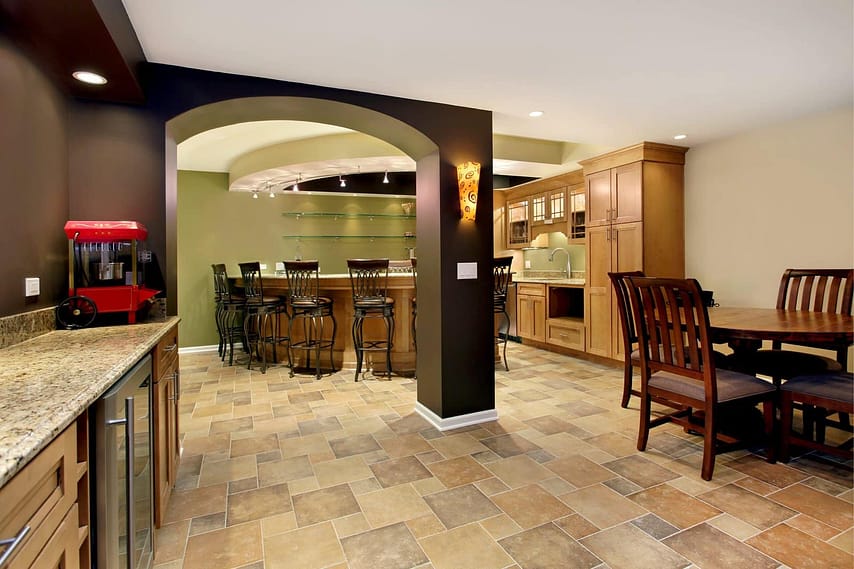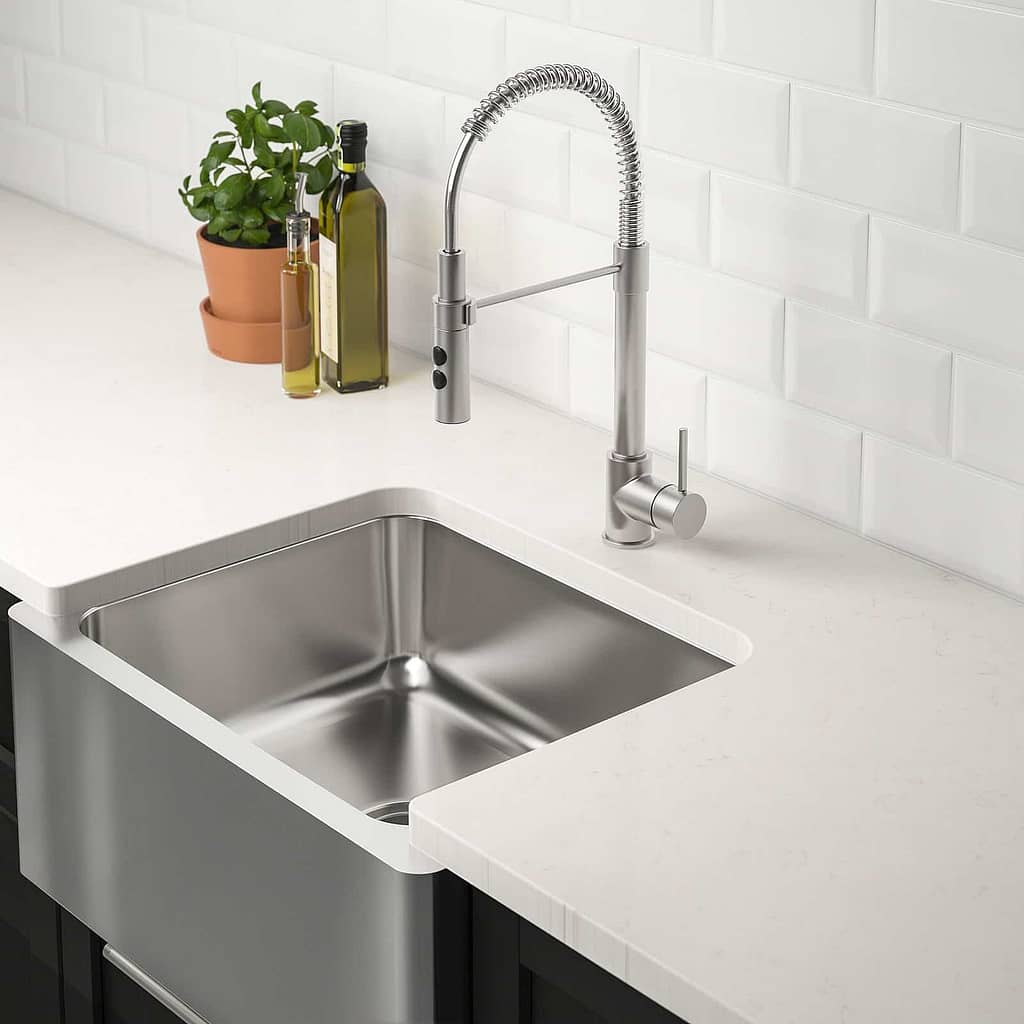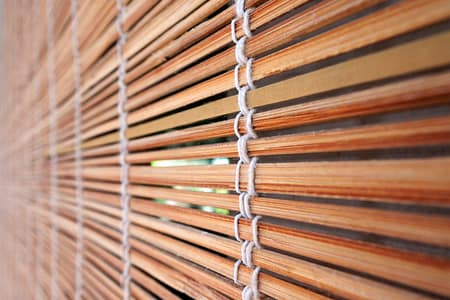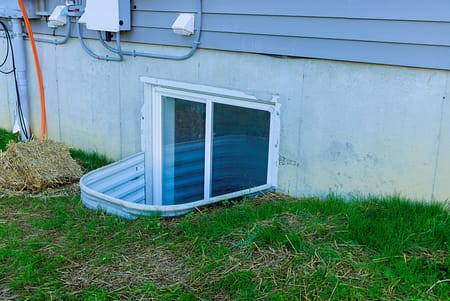When it comes to enhancing your home’s natural light and adding architectural interest, the choice often comes down to bay windows vs bow windows. Both window styles extend beyond your home’s exterior walls, creating a captivating feature that blends function with aesthetics.
But despite their similarities, significant differences set them apart. This comparison will delve into those distinctions, offering a comprehensive comparison to guide homeowners in making an informed decision. Let’s choose the best for you!
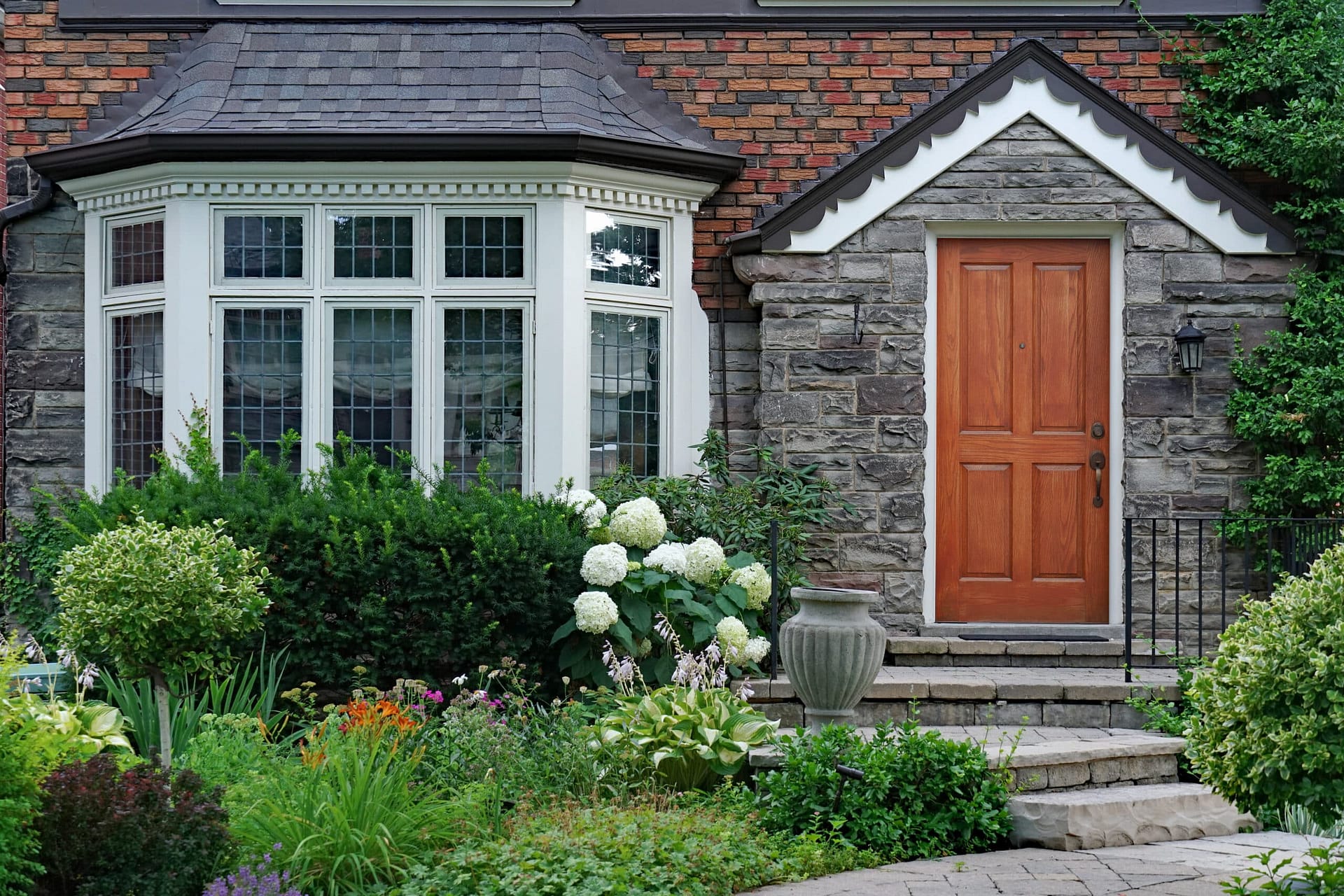
What Are Bay Windows?
A bay window extends from the primary walls of a structure, creating a recessed area within a room. This type of window usually comprises a prominent central window bordered by two smaller windows, angled at 30 or 45 degrees on either side. Such a configuration broadens the room’s dimensions and serves as an eye-catching centerpiece, elevating your residence’s indoor and outdoor aesthetic appeal.
Types of Bay Windows
Bay windows enrich homes by adding depth, light, and architectural interest. Let’s explore the key types of bay windows, each offering unique features and benefits:
● Canted Bay Windows: The classic choice, canted bay windows, feature a flat front and angled sides, often found in Victorian-style homes. They provide a spacious view and enhance room ventilation, making them versatile for various spaces.
● Box Bay Windows: With a distinctive 90-degree angle, box bay window create a pronounced nook, ideal for a cozy breakfast spot or extra storage. Their geometric shape suits a range of home styles, adding functional charm to your space.
● Oriel Bay Windows: Originating from the English Renaissance, oriel bay windows are supported by brackets, adding architectural elegance without extending to the ground. They’re perfect for adding a decorative touch and a cozy interior alcove.
● Circle Bay Windows: Featuring a series of large, gently arched panes, circle bay windows offer panoramic views and flood rooms with natural light. They’re a luxurious addition, ideal for creating a serene sitting area or an impressive entertainment space.

What Are Bow Windows?
In contrast, a bow window consists of four to six glass sections of equal size, forming a gentle curve rather than angular protrusions. This rounded appearance is often associated with Victorian-style homes but can complement many exteriors. Bow windows provide a more comprehensive view of the outdoors and allow more light to enter the room, thanks to the additional glass panels.
Types of Bow Windows
These window expand outdoor views and brighten rooms with extra light. Here’s a brief look at the variations:
● Four-Lite Bow Windows: Ideal for subtly incorporating the bow windows charm, the four-lite version suits various home styles, offering panoramic views and ample sunlight.
● Five-Lite Bow Windows: With its extended curve, the five-lite bow window suits larger spaces, making a more pronounced architectural statement and broadening outdoor views.
● Six-Lite Bow Windows: For a grand effect, the six-lite bow window offers an expansive curve, perfect for traditional homes, providing a wide panoramic view and enhancing the home’s aesthetic.

Detailed Comparison: Bay Vs. Bow Windows
Understanding the nuances between bay and bow window is crucial when enhancing your home with architectural features. Here’s a deep dive into their differences, but let’s have a quick view of differences from the table below;
Feature
Bay Window
Bow Window
Design
Angular with three sections
Curved with four to six sections
View
Broad with slight limits
Panoramic and wide
Space
Adds interior floor space
Enhances room’s openness
Cost
$900 to $7,100 + installation
$1,500 to $15,000 + installation
Materials
Vinyl, wood, aluminum, fiberglass
Vinyl, wood, composite, fiberglass
Installation
Simpler, less structural needs
Complex, may need extra support
Style Compatibility
Versatile, suits many styles
Best for traditional/Victorian homes
Energy Efficiency
Generally higher
Slightly lower but compensable
Flexibility in Design and Usage
Bay Window provide a distinct architectural feature with their protrusion, allowing for creative interior usage, such as creating a dedicated reading nook, dining area, or additional storage space beneath the window.
The curvature of bow windows offers a unique design element that can be wrapped around the corners of a home, creating a turret effect. This feature is particularly striking in corner installations, offering a panoramic view that bay windows cannot.
View and Natural Light
The central picture window of a bay window setup provides a broad view, while the side windows contribute to a more immersive perspective of the outdoors. However, the angular design slightly limits the panoramic view compared to bow window.
With more glass panels, bow window offer a wider, more unobstructed view of the surroundings. The curvature of the design allows for a panoramic viewing experience, bringing in abundant natural light from multiple directions.
Space and Functionality
The angular extension of bay windows into the exterior space provides additional interior square footage, which can be utilized for seating, storage, or as a cozy nook. While bow windows also protrude outward, their curvature offers a more aesthetic enhancement than functional floor space, contributing to the room’s openness and flow.
Cost Considerations
Bay windows range from $900 for simpler designs to $7,100 for larger, feature-rich options. Installation costs add another $300 to $1,000 per window, influenced by the window’s material, size, and additional features like built-in seating.
Bow window start at a higher price point, around $1,500 for premade units, escalating to $15,000 or more for custom installations. The complexity of bow window replacement, often requiring additional structural support, can significantly impact the overall cost.
Material Choices and Types
Bay windows come in various materials like vinyl, wood, aluminum, and fiberglass, providing diverse design options and accommodating different budgetary considerations. Specific types like box bay, canted, circle bay, and oriel each bring their own aesthetic and price range, from the more affordable box bay to the premium oriel style.
Like bay windows, bow windows come in vinyl, wood, composite, and fiberglass, each affecting the window’s durability, maintenance, and cost. The uniformity of pane size in bow windows offers a consistent, elegant look but may require more customization than the varied pane sizes available in bay window designs.
Installation and Structural Requirements
Generally easier and less costly to install, bay windows require less structural modification, making them a popular choice for new constructions and renovations. The installation of bow window is more complex due to their size and curved design.
They often need additional support, such as soffit tie-ins or extended hip roofs, which may necessitate consulting a structural engineer, especially for installations that wrap around corners or span large exterior wall sections.
Architectural Compatibility and Aesthetic Appeal
With their angular design, bay windows blend seamlessly into various architectural styles, from modern to traditional. They are particularly effective in enhancing the home’s exterior aesthetics while providing functional interior space.
The smooth curve of bow window lends an air of elegance and sophistication, making them a fitting choice for homes with traditional or Victorian architectural elements. Their ability to provide expansive, panoramic views can dramatically improve a home’s visual appeal inside and out.
Energy Efficiency and Glass Options
This may offer slightly better energy efficiency due to having fewer glass panels than bow windows. The energy-efficient coatings and glazing option can further enhance their performance, keeping homes warmer in winter and cooler in summer.
More glass panels expose a larger surface area to external temperatures, which could slightly reduce energy efficiency. However, modern bow a window has advanced glazing options to mitigate this, ensuring they remain energy-efficient.

Bay Windows: Pros And Cons
Bay window are appealing when considering adding charm and functionality to your home. Let’s delve into the advantages and drawbacks that come with choosing this style:
Pros:
● Adds interior space for use.
● Suits various architectural styles.
● More affordable than a bow window.
● Provides ample natural light.
● Offers good ventilation.
Cons:
● Views are less panoramic than bow windows.
● It may require significant structural support.
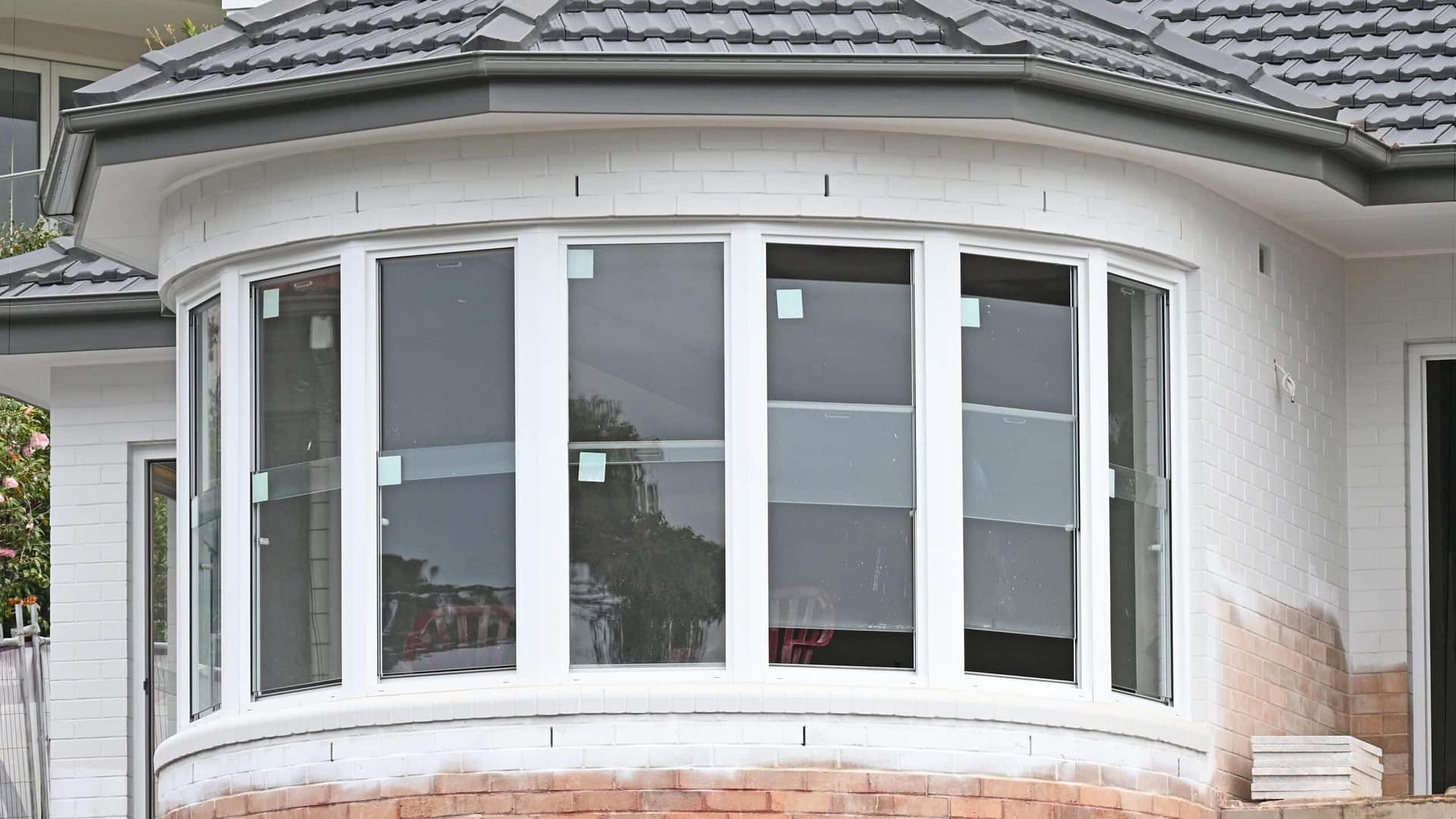
Bow Windows: Pros And Cons
Turning our attention to bow window, we see that these architectural features offer a distinct aesthetic, functional benefit, and specific considerations. Here’s what homeowners can expect:
Pros:
● Offers more expansive, panoramic views.
● Brings in more natural light.
● Adds elegance to home aesthetics.
● Allows flexible window configurations.
Cons:
● Typically costlier due to complexity.
● Installation may need extra support.
● Less added interior space compared to bay windows.
Choosing The Right Window For Your Home
The ideal window—bay or bow—depends on your home’s design, window purpose, and budget. Bay window suit modern homes with a need for extra space, while bow window are ideal for classic homes focusing on light and panoramic views.
Both options significantly improve your space with added light, character, and outdoor views, enhancing your home’s look and utility. Consider the key differences and your specific needs to make the best choice for your home.
Wrap Up:
In conclusion, bay and bow window offer unique benefits to enhance your home, from expanding interior space and natural light to adding architectural elegance. Bay windows are ideal for modern homes needing functional space, while bow windows suit classic homes desiring panoramic views.
Carefully weighing their differences, including design, cost, and installation, will help you choose the right window that complements your home’s style and meets your specific needs, ultimately enriching your living environment.
